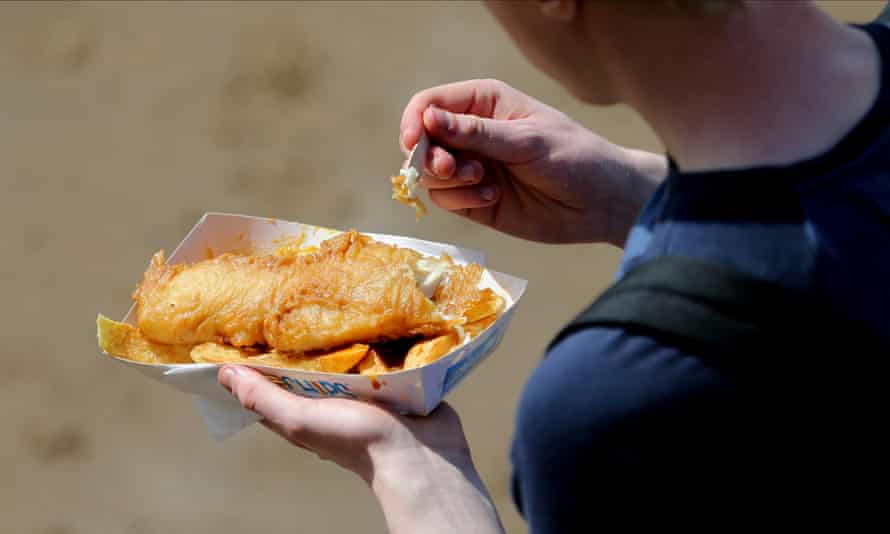It might be unappetising to think, as you’re tucking into succulent prawn balls or traditional fish and chips, that nearly 40% of the fish studied for mislabelling around the world is not what was advertised, according to the Guardian’s analysis of 44 recent studies.
But while fish fraud happens everywhere, from endangered species passed off as snapper in the UK to deadly pufferfish sold with devastating consequences in Bangladesh, how can you know that what you’re eating is what you’ve paid for?
Food standards authorities can now use DNA testing to identify fish, but the average customer merely comes equipped with their own senses. “The way fish is usually presented,” says Prof Alan Reilly of University College Dublin’s Institute of Food and Health, who consults on fishery and aquaculture policy at the UN’s Food and Agriculture Organization (FAO), “is without any skin, scales, fins, head or tail.” A fillet may be a convenient way to buy fish, but you’d have to be an expert to be able to tell with certainty which fish it actually is. Could you be sure that cod is cod when it is broken up, battered, breadcrumbed or suspended in sauce? “Consumers are in the hands of the retailer or the restaurateur,” says Reilly.

Supermarkets and big brands in Europe, he says, have been improving since the horsemeat scandal. “It woke the industry up to the fact that they were being duped. They weren’t checking the authenticity of products, but everybody checks them now, and when you’re purchasing from a trusted supplier, they will have to have a programme in place for vulnerability assessment. That’s all been integrated into contracts.”
Seth McCurry, the UK & Ireland commercial manager for the Marine Stewardship Council, says that the blue MSC label for wild-caught fish and seafood, and the green ASC (Aquaculture Stewardship Council) label for farmed products, provide assurances of authenticity and provenance. These products will have followed the MSC chain of custody standard, he says, “which ensures that the product can be traced back to a certified fishery or farm”. About 38,000 sites around the world carry MSC certification, from supermarkets, fishmongers, hotels and restaurants to processors, distributors and warehouses.
The MSC carries out DNA testing of its affiliated products. “Mislabelling rates are less than 1%, which is pretty encouraging,” says McCurry. The MSC’s most recent study, published in the journal Current Biology in 2019, sampled 1,402 products and 27 species of fish, sourced from retailers across 18 countries. Of the 360 UK products tested, 354 were correctly labelled.
There could be several reasons these rates are so much better than those in the studies the Guardian analysed. First, the studies tended to look at fish where there was at least some existing suspicion of mislabelling. Second, since most fish fraud occurs at sea – for example, when fish is transferred from fishing boats to large transshipment vessels for processing, making mislabelling relatively easy – the MSC’s work to trace the supply chain is key.
“We often talk about overfishing,” says McCurry, “but traceability is equally important in ensuring that people know what they’re eating is not potentially dangerous. The MSC is here to try to reassure people that when they buy a product with the blue label, it can be traced back, and they should feel confident about that.”
Reilly points out, however, that the MSC is a “private sector scheme where you have to pay to be a member”. He says that some of the fish fraud studies cited in his 2018 FAO report on food fraud discovered mislabelled fish sold with an MSC logo. “It probably happens at a lower scale than among the companies who are not members of the MSC, and there are many things going on that are very positive at deterring people from duping consumers. But that doesn’t mean that everything is right.”
Reilly recommends buying whole fish, which are far easier to identify “than a fillet in a plastic pack. If you’re squeamish about filleting one yourself, buy the fish and ask your fishmonger to fillet it for you.”
Mislabelled fish is more common in restaurants – because it’s easier to disguise on the plate and there’s less red tape – than in shops, so be prepared to scrutinise eateries about the provenance of their fish. They should be comfortable explaining the fish’s journey to your plate. The MSC’s study found that the most common substitutions were hoki for hake and haddock for cod. In 2017, research by the Food Standards Agency (FSA) also discovered catfish and whiting being sold as cod, and found that about 7% of fish they sampled in the UK was posing as another species.
Fish sellers that use generic names such as snapper and skate, which can account for up to 60 different species, or that advertise endangered species, should be eyed with suspicion, too. The Good Fish Guide app, produced by the Marine Conservation Society (MCS, as distinct from the MSC) can help with information. In the UK, anyone concerned about possible fish fraud should report it to their local authority or the National Food Crime Unit, both via the FSA’s website.
For once, this has everything to do with the price of fish. Arm yourself with the market price and you’ll be better placed to spot dodgy deals. “Generally speaking, consumers should be wary of menu items containing high-end ingredients which are competitively priced,” says Giles Chapman of the National Food Crime Unit.
“If it looks too good to be true, then it probably is.”
The Link LonkMarch 15, 2021 at 01:02PM
https://ift.tt/3eEEbnu
Is your fish a fake? How to spot seafood fraud and what to do if you're suspicious - The Guardian
https://ift.tt/35JkYuc
Fish
No comments:
Post a Comment